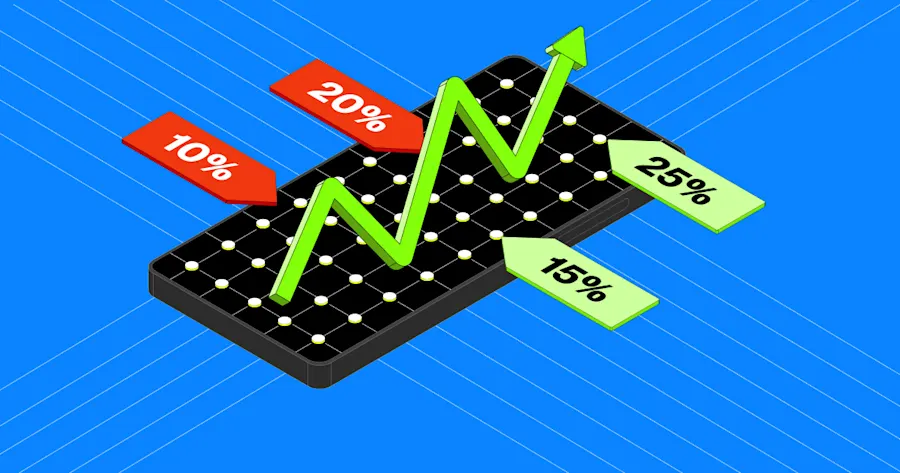Related Articles






A trailing stop loss in the crypto markets is a trading strategy used to protect profits and limit potential losses. It is a dynamic variation of the traditional stop-loss order that adjusts itself automatically as the cryptocurrency’s price moves in a favorable direction.
A trailing stop loss allows crypto traders to lock in profits when prices rise while allowing room for price fluctuations. It allows traders to ride profitable trends during an upward move while protecting against potential reversals.
When placing a trailing stop-loss order, here are the list of parameters traders have to specify.
The initial stop price is typically set below the entry price for a long position and above the entry price for a short position.
The trailing percentage determines how much the stop price will trail and adjust according to changes in the cryptocurrency’s price.
For example, if a trader decides to set a trailing percentage of 7% for a long position, the stop price will move up 7% below the highest price reached since the order was placed for a long position. The converse is true for short positions.
As the crypto price moves in the favor of the trader, the trailing stop loss moves up (for long positions) or down (for short positions) by the specified trailing percentage or amount. It follows or “trails” the price at a predetermined fixed distance.
For example, if $30,000 was the highest price reached since the order was placed and prices have since moved up to $33,000, the trailing stop loss (for a long position) will also move up from $27,900 ($30,000 - 7% x $30,000) to $30,690 ($33,000 - 7% x $33,000).
If the crypto price experiences a reversal or pullback, the trailing stop-loss remains at its last adjusted level. For a long position, the trailing stop-loss will only adjust upwards and will not adjust downwards. For a short position, the trailing stop-loss will only adjust downwards and will not adjust upwards.
For example, when the crypto price moves up from $30,000 to $33,000, the trailing stop-loss (for a long position) will adjust upwards from $27,900 to $30,690. But if the price falls from $33,000 to $31,000, the trailing stop-loss will remain at its current price of $30,690 and it will not adjust downwards.
If the crypto price reverses at or below the trailing stop-loss price, the trailing stop-loss order is triggered and becomes a market order to sell (for a long position) or buy (for a short position). Trailing stop-losses provide some room for price fluctuations while allowing traders to protect a portion of their profits.
For example, if the crypto price falls from $33,000 to $30,690, the trailing stop-loss order at $33,690 will be triggered and your long position will be sold at the current market price.
Calculating a trailing stop-loss in crypto trading requires you to have the following information:
Highest price since entry
Trailing percentage or amount
For long positions:
The trailing stop price can be calculated by subtracting the trailing percentage or amount from the highest price reached since entry.
Trailing stop price = Highest price since entry - Trailing percentage or amount
For example, if the highest price since entry is $30,000 and the trailing percentage that the trader selects is 7%, the initial trailing stop price will be set at $27,900 ($30,000 - 7% x $30,000). If prices rise by 10% to $33,000, the trailing stop price will also move up by 10% to $30,690, maintaining the 7% distance away from the new highest price reached.
For short positions:
The trailing stop price can be calculated by adding the trailing percentage or amount from the lowest price reached since entry.
Trailing stop price = Lowest price since entry + Trailing percentage or amount
For example, if the lowest price since entry is $30,000 and the trailing percentage that the trader selects is 7%, the initial trailing stop price will be set at $32,100 ($30,000 + 7% x $30,000). If prices fall by 10% to $27,000, the trailing stop price will also decline by 10% to $28,890, maintaining the 7% distance away from the new lowest price reached.
Implementing trailing stop-loss orders can help traders protect their profits by automatically adjusting the stop price upwards (for long positions) as crypto prices rise. This allows traders to lock in their gains and ensure that if prices experience a reversal or pullback, traders can exit their positions and protect a portion of their profits.
Trailing stop-loss orders, a type of stop-loss order, are effective tools for risk management. These stop-loss orders allow traders to determine the amount of risks and losses they are willing to tolerate.
The trailing stop-loss orders will adjust the stop price upwards as the price increases. This mechanism helps traders manage their risk in the event of a sudden price drop.
One of the biggest obstacles in crypto trading is emotions. Emotions such as fear and greed can have a negative influence on traders’ decision-making process causing them to make decisions that they might not otherwise have in the crypto markets.
Trailing stop-loss orders are automated and executed based on predetermined parameters. This eliminates the emotional component of trading decisions, helping traders stick to their predefined strategies and avoid impulsive actions during periods of volatility in the crypto markets.
While trailing stop losses offer several benefits, they do not guarantee protection against losses. Traders should use trailing stop losses in conjunction with other risk management strategies and tailor them to their specific trading strategies and risk tolerance.
Disclaimer: This material is for information purposes only and does not constitute financial advice. Flipster makes no recommendations or guarantees in respect of any digital asset, product, or service. Trading digital assets and digital asset derivatives comes with significant risk of loss due to its high price volatility, and is not suitable for all investors.
Crypto Fear And Greed Index Explained
Next ArticleCrypto Market Supply and Demand Explained




